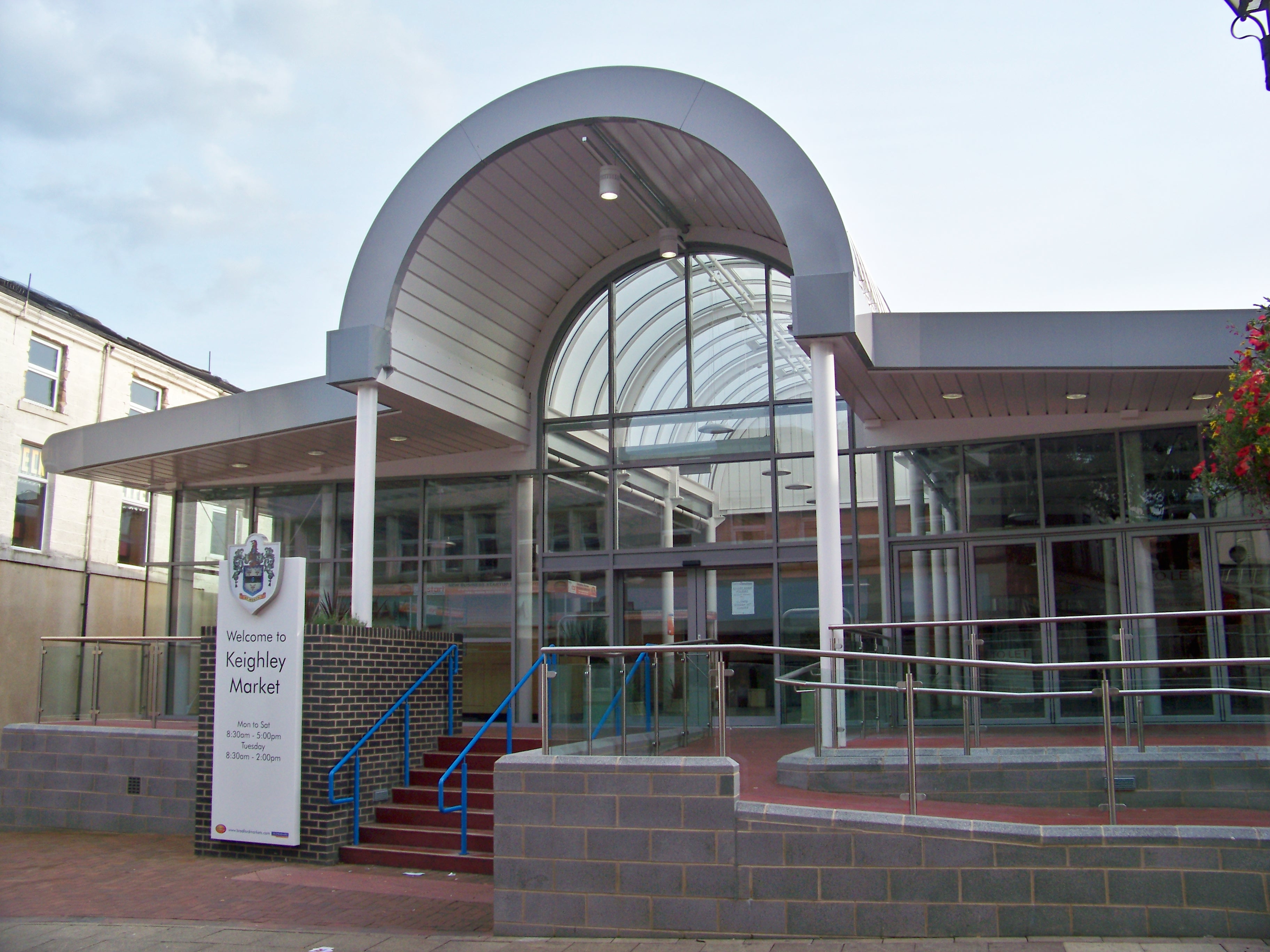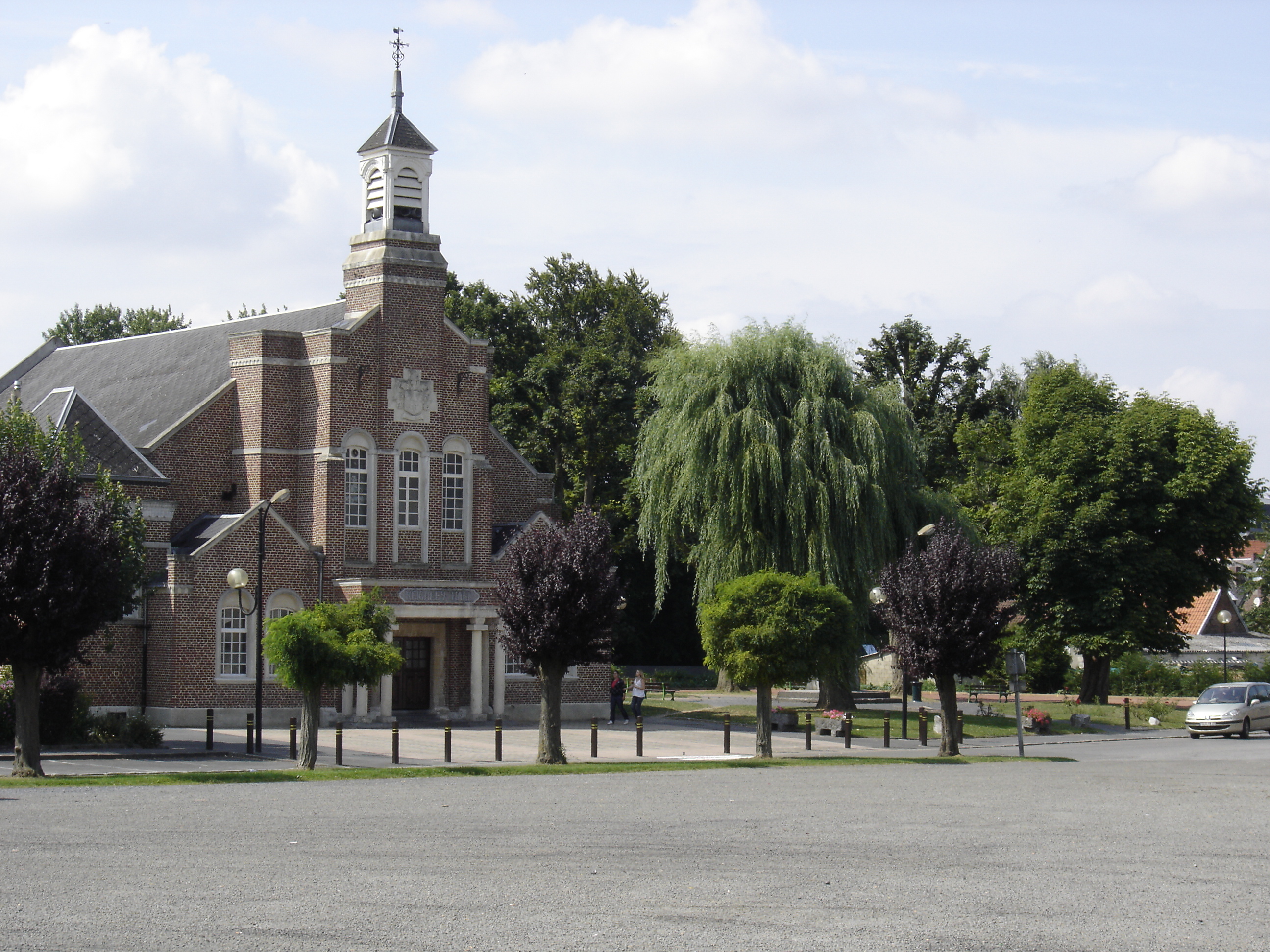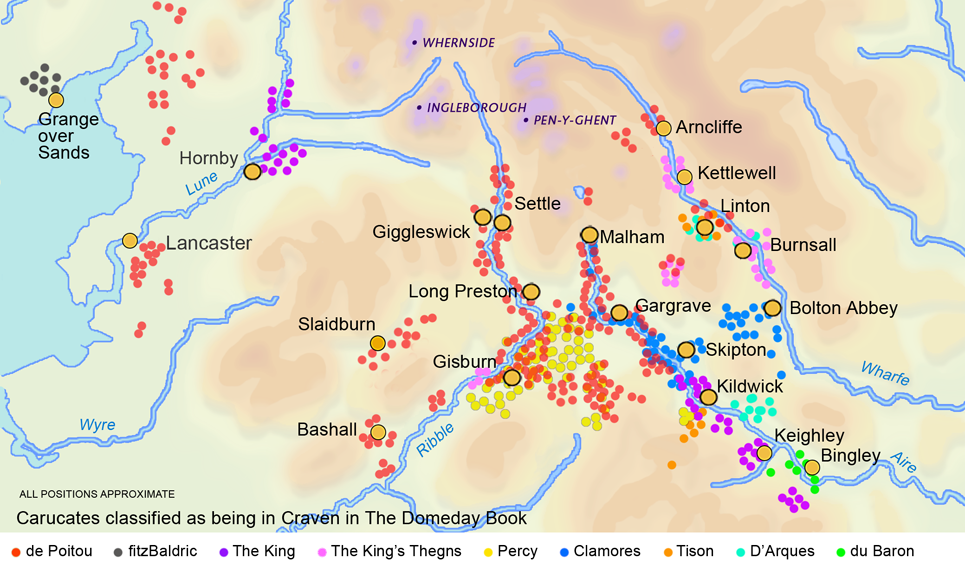|
Silsden
Silsden is a town and civil parish in the City of Bradford in West Yorkshire, England, on the River Aire and Leeds and Liverpool Canal between Keighley and Skipton, which had a population of 8,390 at the 2021 Census. The parish includes the hamlet of Brunthwaite. A milestone on the A6034 "Keighley Rd" as it crosses the river Aire marks the boundary of the town. History Silsden was mentioned in the 1086 ''Domesday Book'' as "Siglesdene", and as the most important village in Craven. Generally an agricultural area, the Industrial Revolution had a significant impact on West Yorkshire, including Silsden. The town hosted a number of mills none of which now operate in their original form. Nail making can be traced back to the late 1700s when the Leeds and Liverpool Canal gave ready access to remote markets and easier access to raw materials from the forges in Leeds. By the mid 1800s there was steady work for over 100 men and boys making nails throughout the town. A wide variet ... [...More Info...] [...Related Items...] OR: [Wikipedia] [Google] [Baidu] |
City Of Bradford
Bradford (), also known as the City of Bradford, is a metropolitan borough in West Yorkshire, England. It is named after its largest settlement, Bradford, but covers a larger area which includes the towns and villages of Keighley, Shipley, West Yorkshire, Shipley, Bingley, Ilkley, Haworth, Silsden, Queensbury, West Yorkshire, Queensbury, Thornton, West Yorkshire, Thornton and Denholme. Bradford has a population of 528,155, making it the List of English districts by population, fourth-most populous metropolitan district and the ninth-most populous local authority district in England. It forms part of the West Yorkshire Urban Area conurbation which in 2011 had a population of 1,777,934, and the city is part of the Leeds-Bradford Larger Urban Zone (LUZ), which, with a population of 2,393,300, is the fourth largest in the United Kingdom after London, Birmingham and Manchester. The city is situated on the edge of the Pennines, and is bounded to the east by the City of Leeds, the sou ... [...More Info...] [...Related Items...] OR: [Wikipedia] [Google] [Baidu] |
Silsden Hoard
{{No footnotes, date=February 2020 The Silsden Hoard is an assemblage containing 27 gold coins of late British Iron Age date and a Roman iron finger ring. Discovery The hoard was discovered in 1998 by Jeff Walbank using a metal detector in a field at Silsden in West Yorkshire, England. The hoard was declared to be treasure before being acquired by Bradford Art Galleries and Museums in 2000. The hoard is now on display at Cliffe Castle Museum in Keighley, near where it was found. Contents of the Hoard The Silsden Hoard was found to contain 27 gold staters dating from the 1st century AD. Most of the coins were issued by Cunobelinus, at various times throughout his reign. Others were issued by his brother ymbeline/nowiki> (d. ''c''. AD 40), king in ..., at various times throughout his reign. Others were issued by his brother Epaticcus">ymbeline/nowiki> (d. ''c''. AD 40), king in ..., at various times throughout his reign. Others were issued by his brother Epaticcus. Coins o ... [...More Info...] [...Related Items...] OR: [Wikipedia] [Google] [Baidu] |
West Yorkshire
West Yorkshire is a Metropolitan counties of England, metropolitan and Ceremonial counties of England, ceremonial county in the Yorkshire and the Humber region of England. It borders North Yorkshire to the north and east, South Yorkshire and Derbyshire to the south, Greater Manchester to the south-west, and Lancashire to the west. The city of Leeds is the largest settlement. The county has an area of and a population of 2.3 million, making it the fourth-largest ceremonial county by population. The centre of the county is urbanised, and contains the city of Leeds in the north-east, the city of Bradford in the north-west, Huddersfield in the south-west, and Wakefield in the south-east. The outer areas of the county are rural. For local government purposes the county comprises five metropolitan boroughs: City of Bradford, Bradford, Calderdale, Kirklees, City of Leeds, Leeds, and City of Wakefield, Wakefield, which collaborate through West Yorkshire Combined Authority. The cou ... [...More Info...] [...Related Items...] OR: [Wikipedia] [Google] [Baidu] |
Keighley (UK Parliament Constituency)
Keighley ( ) is a market town and a civil parish in the City of Bradford Borough of West Yorkshire, England. It is the second-largest settlement in the borough, after Bradford. Keighley is north-west of Bradford, north-west of Bingley, north of Halifax and south-east of Skipton. It is governed by Keighley Town Council and Bradford City Council. Keighley is in West Yorkshire, close to the borders of North Yorkshire and Lancashire. Historically in the West Riding of Yorkshire, it lies between Airedale and Keighley Moors. At the 2011 census, Keighley had a population of 56,348. History Toponymy The name Keighley, which has gone through many changes of spelling throughout its history, means "Cyhha's farm or clearing", and was mentioned in the Domesday Book of 1086: "In Cichhelai, Ulchel, and Thole, and Ravensuar, and William had six carucates to be taxed." Town charter Henry de Keighley, a Lancashire knight, was granted a charter to hold a market in Keighley on 17 Oct ... [...More Info...] [...Related Items...] OR: [Wikipedia] [Google] [Baidu] |
Keighley
Keighley ( ) is a market town and a civil parishes in England, civil parish in the City of Bradford Borough of West Yorkshire, England. It is the second-largest settlement in the borough, after Bradford. Keighley is north-west of Bradford, north-west of Bingley, north of Halifax, West Yorkshire, Halifax and south-east of Skipton. It is governed by Keighley Town Council and Bradford City Council. Keighley is in West Yorkshire, close to the borders of North Yorkshire and Lancashire. Historic counties of England, Historically in the West Riding of Yorkshire, it lies between Airedale and Keighley Moors. At the 2011 census, Keighley had a population of 56,348. History Toponymy The name Keighley, which has gone through many changes of spelling throughout its history, means "Cyhha's farm or clearing", and was mentioned in the Domesday Book of 1086: "In Cichhelai, Ulchel, and Thole, and Ravensuar, and William had six carucates to be taxed." Town charter Henry de Keighley, a ... [...More Info...] [...Related Items...] OR: [Wikipedia] [Google] [Baidu] |
River Aire
The River Aire is a major river in Yorkshire, England, in length. Part of the river below Leeds is canalised, and is known as the Aire and Calder Navigation. The ''Handbook for Leeds and Airedale'' (1890) notes that the distance from Malham to Howden is direct, but the river's meanderings extend that to . Between Malham Tarn and Airmyn, the river drops . Course The Aire starts at Malham Tarn and becomes a subterranean stream at 'Water Sinks' about one mile (1.6 km) before the top of Malham Cove, it then flows underground to Aire Head, just below Malham, in North Yorkshire, and then flows through Gargrave and Skipton. After Cononley, the river enters West Yorkshire where it passes through the former industrial areas of Keighley, Bingley, Saltaire and Shipley. It then passes through Leeds and on to Swillington and Woodlesford. At Castleford is the confluence of the Aire and Calder; just downstream of the confluence was the ford where the ancient British road, us ... [...More Info...] [...Related Items...] OR: [Wikipedia] [Google] [Baidu] |
Leeds & Liverpool Canal
The Leeds and Liverpool Canal is a canal in Northern England, linking the cities of Leeds and Liverpool. Over a distance of , crossing the Pennines, and including 91 locks on the main line. The Leeds and Liverpool Canal has several small branches, and in the early 21st century a new link was constructed into the Liverpool docks system. History Background In the mid-18th century the growing towns of Yorkshire, including Leeds, Wakefield and Bradford, were trading increasingly. While the Aire and Calder Navigation improved links to the east for Leeds, links to the west were limited. Bradford merchants wanted to increase the supply of limestone to make lime for mortar and agriculture using coal from Bradford's collieries and to transport textiles to the Port of Liverpool. On the west coast, traders in the busy port of Liverpool wanted a cheap supply of coal for their shipping and manufacturing businesses and to tap the output from the industrial regions of Lancashire. Inspired b ... [...More Info...] [...Related Items...] OR: [Wikipedia] [Google] [Baidu] |
Craven In The Domesday Book
The extent of the medieval district of Craven, in the north of England is a matter of debate. The name Craven is either pre-Celtic British, Britonnic or Romano-British in origin. However, its usage continued following the ascendancy of the Anglo-Saxons and the Normans – as was demonstrated by its many appearances in the Domesday Book of 1086. Places described as being ''In Craven'' in the Domesday Book fell later within the modern county of North Yorkshire, as well as neighbouring areas of West Yorkshire, Lancashire and Cumbria. Usage of Craven in the Domesday Book is, therefore, circumstantial evidence of an extinct, British or Anglo-Saxon kingdom or subnational entity (such as a shire or earldom). The former local government district of Craven – a much smaller area entirely within North Yorkshire – was defined in 1974 and was abolished in 2023 to be replaced by the unitary authority of North Yorkshire. Background Although historic Craven extended a little further ... [...More Info...] [...Related Items...] OR: [Wikipedia] [Google] [Baidu] |
Sam Shendi
Sam Shendi is an Egyptian-born, British sculptor. He uses contemporary industrial material, steel, stainless steel, aluminium and fibreglass to create his figurative work. He lives and works in North Yorkshire. Early life Sam Shendi was born in 1975 on the Nile Delta in a small town called Dekernes. He graduated from the Helwan University of Fine Arts in Cairo in 1997 with a first class honours degree in Sculpture and Architecture. In 1996 he won the Mahmoud Mokhtar Sculpture Award. Shendi moved to Britain in 2000 and became a member of the Royal British Society of Sculptors in 2014. Work Shendi's early work in bronze and stainless steel often explored notions of balance, joy and contentment. Shendi's recent semi-abstracted figures are made in rich curving colours with a wacky sense of fun. Although they have the sleek precision of mechanical production, each is hand-made using industrial, contemporary materials like car filler and spray-paint, and hours of manual sanding. ... [...More Info...] [...Related Items...] OR: [Wikipedia] [Google] [Baidu] |
Leeds And Liverpool Canal
The Leeds and Liverpool Canal is a canal in Northern England, linking the cities of Leeds and Liverpool. Over a distance of , crossing the Pennines, and including 91 locks on the main line. The Leeds and Liverpool Canal has several small branches, and in the early 21st century a new link was constructed into the Port of Liverpool, Liverpool docks system. History Background In the mid-18th century the growing towns of Yorkshire, including Leeds, Wakefield and Bradford, were trading increasingly. While the Aire and Calder Navigation improved links to the east for Leeds, links to the west were limited. Bradford merchants wanted to increase the supply of limestone to make lime for mortar and agriculture using coal from Bradford's collieries and to transport textiles to the Port of Liverpool. On the west coast, traders in the busy port of Liverpool wanted a cheap supply of coal for their shipping and manufacturing businesses and to tap the output from the industrial regions of Lanc ... [...More Info...] [...Related Items...] OR: [Wikipedia] [Google] [Baidu] |
Daily Mirror
The ''Daily Mirror'' is a British national daily Tabloid journalism, tabloid newspaper. Founded in 1903, it is part of Mirror Group Newspapers (MGN), which is owned by parent company Reach plc. From 1985 to 1987, and from 1997 to 2002, the title on its Masthead (British publishing), masthead was simply ''The Mirror''. It had an average daily print circulation of 716,923 in December 2016, dropping to 587,803 the following year. Its Sunday sister paper is the ''Sunday Mirror''. Unlike other major British tabloids such as ''The Sun (United Kingdom), The Sun'' and the ''Daily Mail'', the ''Mirror'' has no separate Scottish edition; this function is performed by the ''Daily Record (Scotland), Daily Record'' and the ''Sunday Mail (Scotland), Sunday Mail'', which incorporate certain stories from the ''Mirror'' that are of Scottish significance. The ''Mirror'' publishes an Irish edition, the ''Irish Mirror''. Originally pitched to the middle-class reader, it was converted into a worki ... [...More Info...] [...Related Items...] OR: [Wikipedia] [Google] [Baidu] |






